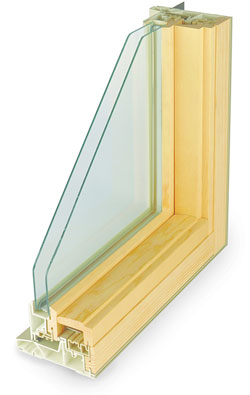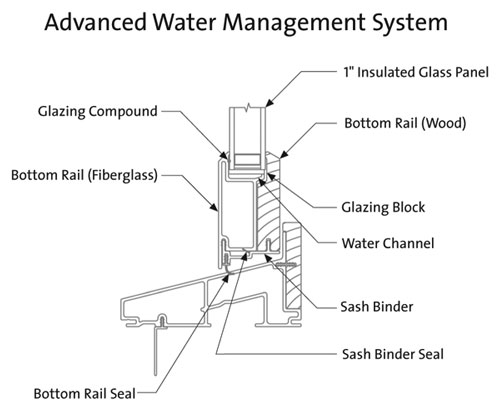Fiberglass Fenestration Comes into its Own
 |
|
Photo: Milgard Windows & Doors |
Connecting Systems
How well a window's components are put together-and stay together-is a key factor in its longevity and energy efficiency. Tight seals maintain the resistance to air leakage and water penetration; conversely, seal failure can increase the risk of water damage or mold and shorten the life of the product. The best windows will have a secure connecting system to firmly join the wood and fiberglass together, ensuring that the interior views are all wood with no nail holes or putty marks to spoil the view. Traditionally, in wood windows, mortise-and-tenon joinery is used to construct the sash. Window manufacturers that use materials such as fiberglass and wood have a larger contact area in which to connect the sash components; glue can be used to further strengthen the mechanical connection. Corner keys are used to lock the sash together and hold it in place, which ensures structural integrity, and a stronger, more stable connection that in turn makes the window more durable and require less maintenance.
Water Management System
Window systems should be impervious to water, yet a common window problem is penetration of moisture. Accumulation of moisture can lead to damage to interior finishes and/or mold growth and associated health risks, representing a highly litigious problem related to window systems. Prevention of moisture accumulation can be handled via two types of systems-a barrier system in which exterior surfaces and window joints are designed to be permanently sealed to prevent any water penetration; or a drainage system which collects and drains any water leakage outside the window system. Drainage systems are generally preferred because they assume some water leakage and are not dependent on the exterior seals, which may become compromised due to aging or faulty installation.
Manufacturers rely on a wet seal or glazing tape as the primary means of preventing water from coming into the sash. Any break in this primary seal will provide a path for water to travel. Most wood windows lack a weep system, so any water that penetrates the primary seal will either be absorbed by the wood or seep into the inside of the home. With their hollow sash, fiberglass or other composite windows can be designed with a drainage system that directs water away from the wood and channels it down through the exterior of the frame to exit inconspicuously out the sill, thus preventing any water damage to the interior wood.
 |
Photo: Milgard Windows & Doors |









